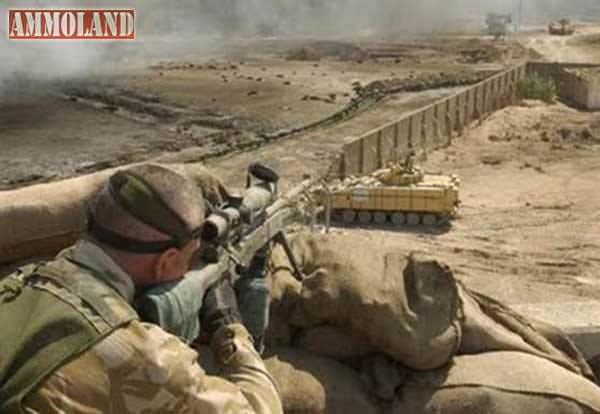
 Canada –-(Ammoland.com)- The Department of National Defence has confirmed that a Canadian sniper has broken the record for longest confirmed sniper shot in military history.
Canada –-(Ammoland.com)- The Department of National Defence has confirmed that a Canadian sniper has broken the record for longest confirmed sniper shot in military history.
The soldier, a member of Canada’s elite Joint Task Force 2 (JTF2) special forces unit deployed to Iraq, targeted and killed an Islamic State fighter in Mosul at a distance of almost three and a half kilometres.
“The Canadian Special Operations Command can confirm that a member of the Joint Task Force 2 successfully hit a target from 3,450 metres,” the Department of National Defence confirmed in a statement to Global News.
“For operational security reasons and to preserve the safety of our personnel and our Coalition partners, we will not discuss precise details on when and how this incident took place.”
The extreme distance shot shatters the previous record of 2, 475 yards (2263 m) set by British Corporal Craig Harrison in Afghanistan in 2009. Canadian soldiers currently claim three of the top five longest confirmed shots ever recorded in the history of warfare.
DND officials stress that this engagement did not contravene the Canadian Forces mission in Iraq known as Operation Impact, which specifies a training and advisory – as opposed to frontline combat – role.
“The advice and assist tasks provided by the Special Operations Task Force (SOTF) remain consistent with those that have been provided since the start of Operation IMPACT,” The Department said in a statement to Global News. “The SOTF provides its expertise to Iraqi security force to detect, identify and defeat Daesh (ISIS) activities from well behind the Iraqi security force frontline in Mosul.”
“As stated multiple times in the past, members of the Canadian Special Operations Task Force do not accompany leading combat elements, but enable the Iraqi security forces who are in a tough combat mission.”
While DND officials cannot disclose specific details of JTF2 operations, a Canadian firearms and target shooting expert says the obstacles faced in making a shot at such extreme distance are varied, and all present a huge degree of difficulty.
“First of all, there is bullet drop due to gravity,” Tony Bernardo, Executive Director of the Canadian Shooting Sports Association tells Global News. “And the bullet drop would be unbelievable. At just a thousand metres [the drop] can be several feet., and it increases exponentially as you move farther out.”
“The second factor is wind drift. Very small amounts of wind [can] make major drifts in the trajectory. A simple 10 mph breeze at [a distance of] 1000 m will make a difference of a few feet.”
At such extreme distance, the travel time for the bullet can be as long as ten seconds – meaning the shooter must account for the rotation of the Earth underneath the bullet as the shot travels.
Even an operator’s heartbeat can throw off his sight picture by a few millimetres – the difference of feet or metres once the bullet travels the intervening distance.
“When you’re sitting there at a shooting range with a rifle at 100 m, looking through a 14 or 15 [magnification] scope, you can actually see your heartbeat in the crosshairs because your body is translating it to the sight system,” Bernardo said. “And that’s only at 100 m, not 3500 m.”
Most sniper teams, including those of the Canadian Forces, operate in two-man units: one soldier acts as a spotter, with a laser range-finder and a hand-held computer, while the other soldier aims and fires the rifle at the target.

In this case, the rifle was a McMillan Tac-50 – known as a C15 Long Range Sniper Weapon in Canadian military parlance – a .50 calibre bolt action rifle with a 5-round capacity, in service with the Canadian Forces since 2000.
“We arguably make the most accurate .50 calibre rifle there is,” Brian Clyde with McMillian Firearms Manufacturing tells Global News. He says the longest distance the company ever tested the weapon to was 3000 yards (2743 m) – the extreme range of the company testing facilities.
The fight to permanently cripple the so-called Islamic State will require at least another year of hard-fought battles in Iraq and Syria according to Brig.-Gen. Daniel MacIsaac, who assumed command of Operation Impact in March.
In an interview with Global News earlier this month, MacIsaac said he fully expects the Canadian mission to be extended beyond the current end-date of June 30, 2017.
“We’re foreseeing that soon, before that date, we’ll receive a new revised mandate,” he said. “I’m sure we’ll continue to be here after the 30th of June.”
Canadian warplanes with bombing capability were pulled out of the mission by the Liberal government in early 2016, but hundreds of Canadian men and women remain in place to assist with training, reconnaissance, medical operations and other support roles.
